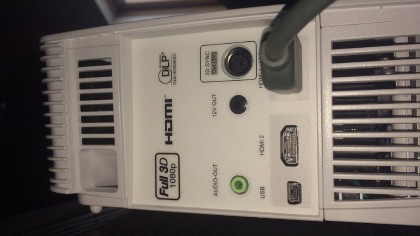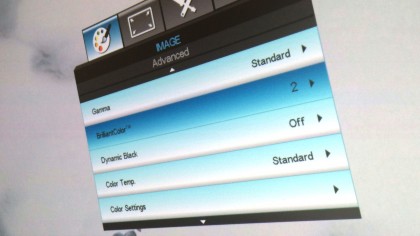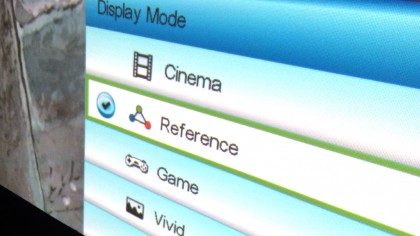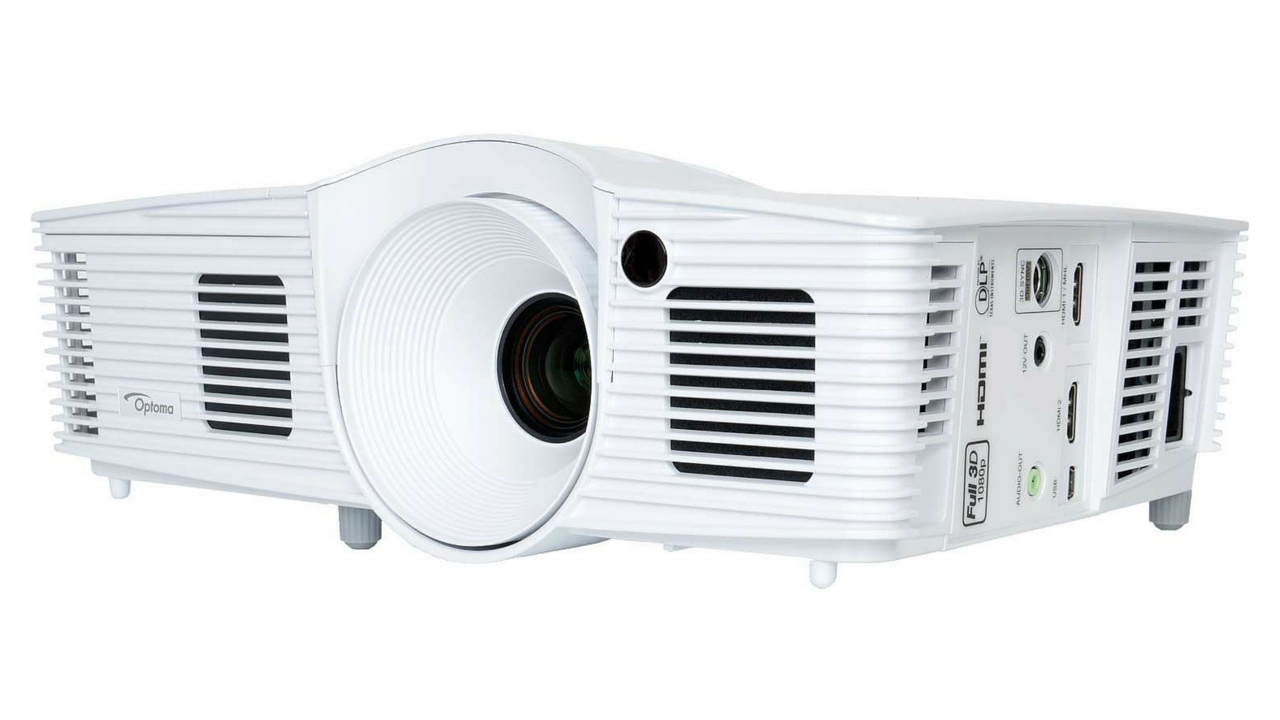TechRadar Verdict
This entry-level, Full HD beamer is a surprisingly capable home cinema performer. Give it some low ambient light levels and its colour and black level performance impress. It's not perfect though; ultimately lacking overall detail in the final reckoning.
Pros
- +
Great value
- +
Colours and black levels
- +
Backlit remote control
- +
Full HD detail
- +
Two HDMI
Cons
- -
Slightly soft images
- -
Some motion blur
- -
Trace of rainbow effect
- -
Tricky set-up
Why you can trust TechRadar
High-end home cinema projection used to be the reserve of those who could afford a high cost product and provide a dedicated room, complete with blackout, for watching films and playing games.
All that changes with entry-level projectors like the HD26.
While 'entry-level' so often means having to put up with HD-ready 720p resolution, the HD26 offers both Full HD and a high brightness mode.
This single-chip DLP model is also designed to be used during the day – perhaps in a living room or bedroom – with a high brightness mode that reaches 3,200 ANSI lumens. That's right on the cusp of all-day usability, but it ought to suffice.
Design and specs
Measuring 315 x 224 x 114mm and weighing 2.45kg, the pure white HD26 is reasonably easy to house, with its big, though slightly off-centre lens brought as far forward as possible in the design.
The HD26's key feature is Dynamic Black, which is accessed through the onscreen menus. You can also toggle to 'bright' for daytime viewing and all the way to 'cinema' at night, though it also allows custom picture modes for itinerant tweakers.

It may not be as bright as its pricier, heavyweight brother, the HD36, but the HD26 does have something its sibling does not; a second HDMI input. However, in other areas it's not as advanced, boasting a built-in speaker that manages just 10W power compared to the HD36's 30W.
The HD26 remains much more of a traditional home cinema projector than the HD36.
Compare the ins and outs (located on the HD26's side, which is much more convenient than on most projectors) and it's obvious. While the HD36 builds-in enough connections for presentations from almost any device – and at the cost of a single HDMI input – the HD26's rear panel is simplicity defined; all you'll find there are two HDMI inputs, a 12V trigger and a 3.5mm audio output.
One of those HDMI inputs is MHL-ready, so you can wire-up a smartphone. The HD26 is 3D-ready, too, though you will need to purchase the ZF2300 3D 'starter kit') for £200.
Performance
With Insurgent on Blu-ray pumping through the HD26 in daylight and with the lamp on 'bright', black levels are predictably lacking – that's the trade-off – but colour is rich and well saturated.
If anything they're slightly over-done, with bright colours rather searing and subtle shades not as nuanced as they should be during special effect scenes amid the ruins of Chicago. There is just enough of detail on show, but not as a constant; I did notice some motion blur during the high-octane shoot-out sequences, and considerable judder during side-to-side camera pans.

At all other times, the HD26 is demonstrably Full HD...but only just.
Switch to Eco mode during a blackout and the HD26's flaws largely vanish; during a close-up of Tris in Insurgent, her skin looks more natural than during bright mode, while colours regain some nuance and balance.
However, the HD26's images never approach the exacting skills of projectors twice the price.
The same goes for standard definition, with the House of Flying Daggers on DVD getting a similarly mixed treatment in day and night, though as well as being soft, DVD is noisy in both scenarios.

The HD26 does well with games.
A blast of Pro Evolution Soccer 2015 from an Xbox One looks a little garish via Game Mode (which suppresses al processing for maximum response time), but is highly playable and largely free from, blur, judder or input lag. While its built-in speaker is thoroughly rudimentary in theory, in practice it provides excellent sonics for the limited crowd noise and commentary of PES 2015.
For games that are all about being immersed in surround sound, don't even think about it, but the HD26's speakers are better than you might expect.
Jamie is a freelance tech, travel and space journalist based in the UK. He’s been writing regularly for Techradar since it was launched in 2008 and also writes regularly for Forbes, The Telegraph, the South China Morning Post, Sky & Telescope and the Sky At Night magazine as well as other Future titles T3, Digital Camera World, All About Space and Space.com. He also edits two of his own websites, TravGear.com and WhenIsTheNextEclipse.com that reflect his obsession with travel gear and solar eclipse travel. He is the author of A Stargazing Program For Beginners (Springer, 2015),

